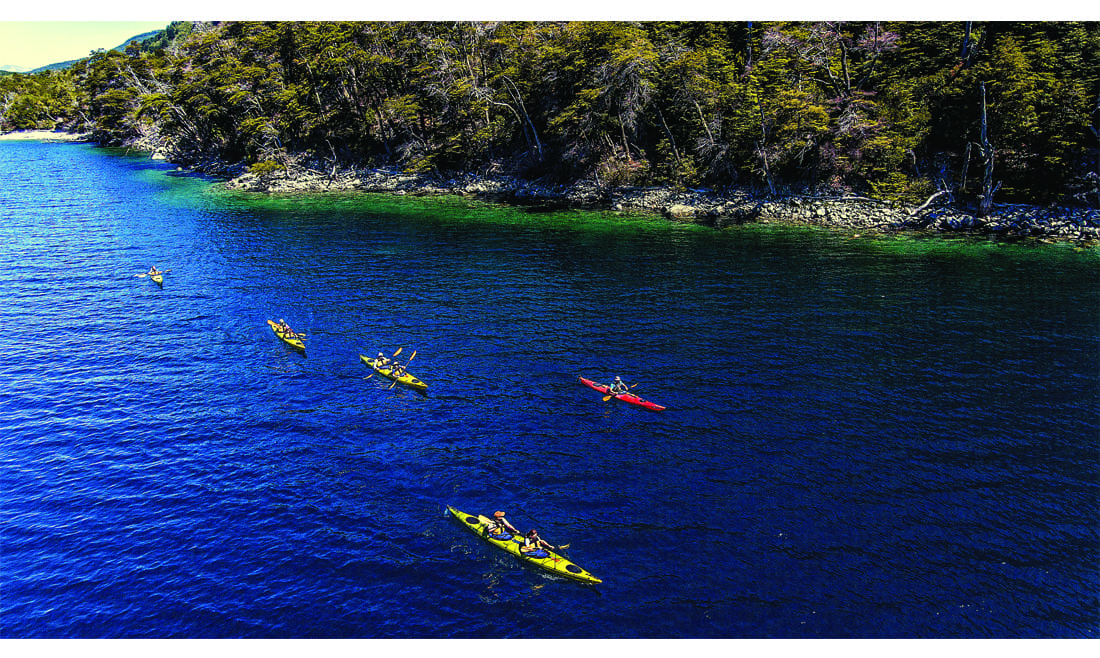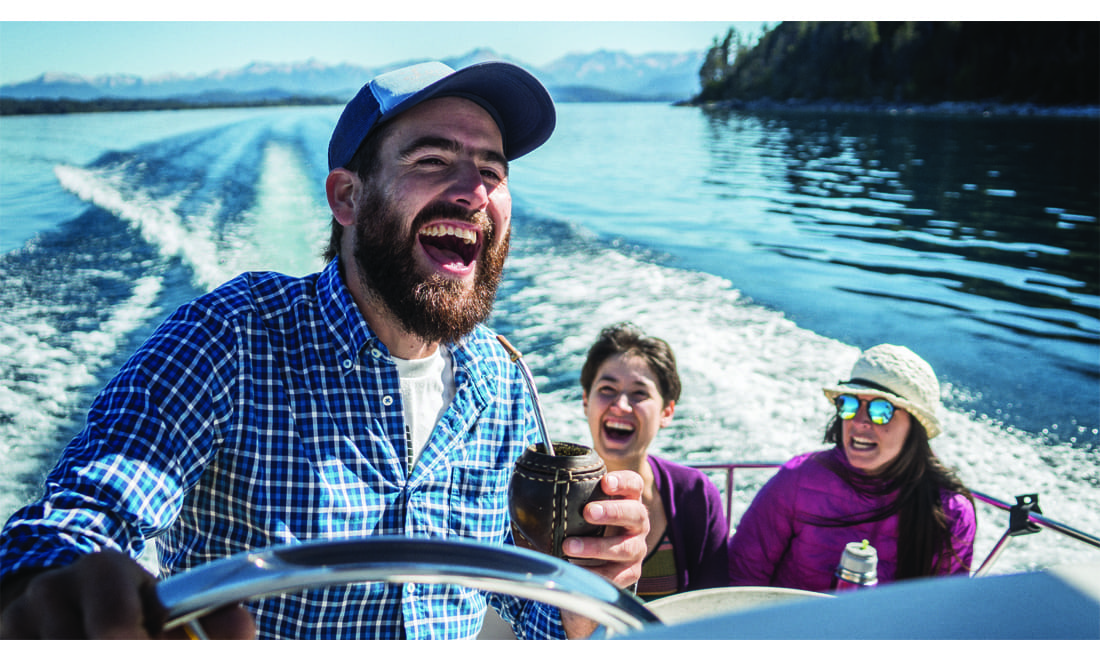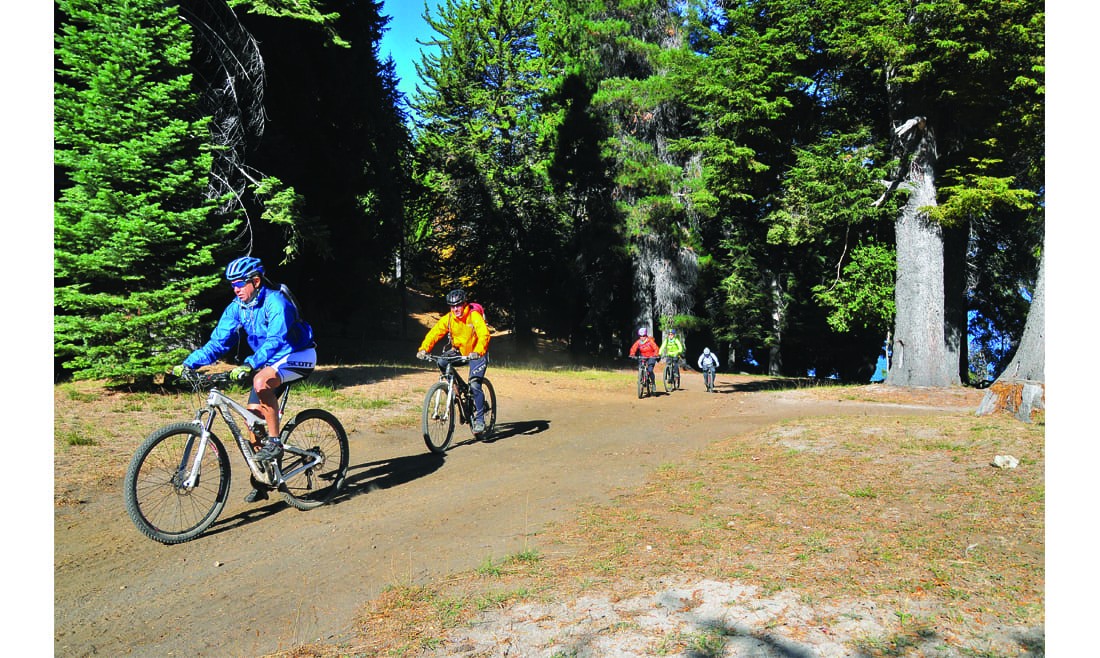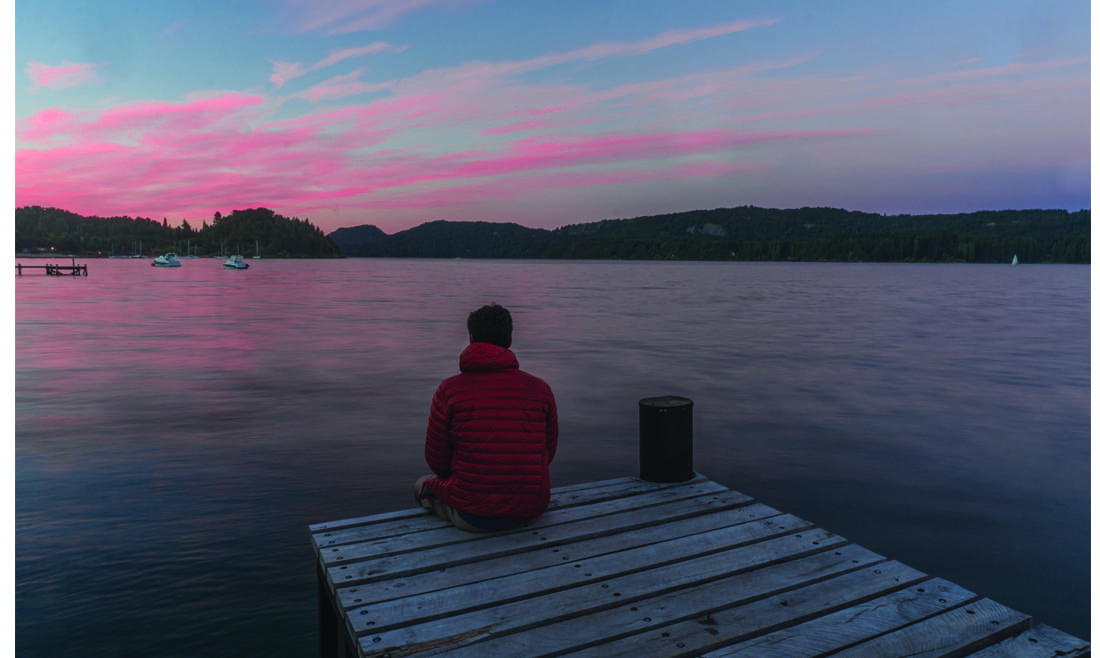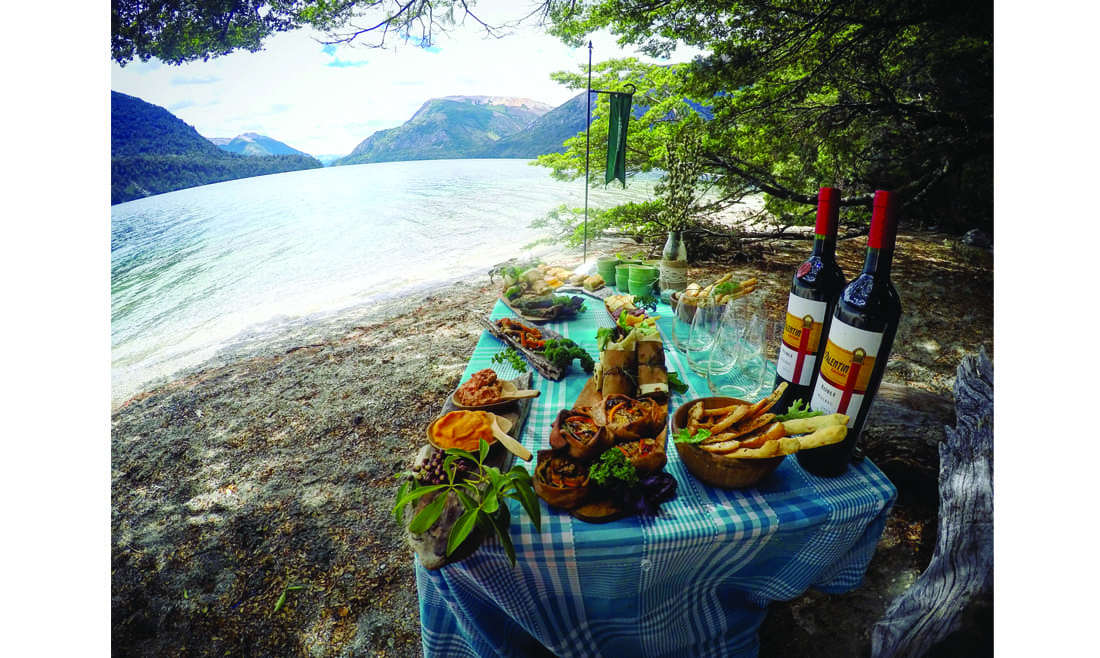Care for a horse-ride on the breathtaking Patagonian landscape? Or maybe a 4x4 tour down a desert? Take a glance at glaciers? What about a walk in the national park that holds one of the Seven Natural Wonders of the World, Iguazú Falls? Or want to go to a Buenos Aires’ milonga and dance the tango all night? All of this and a whole lot more is what Argentina has to offer you during your visit. The country is widely known for its rich variety in geography and climates.
For those who do not know, ecotourism is an alternative to traditional tourism. It implies an activity which aims to minimize the damage tourists may cause to the natural environment. The International Ecotourism Society (TIES) defines it as “a responsible travel to natural areas, that conserve the environment, sustains the well-being of the local people, and involves interpretation and education”. As a result, ecotourism brings a certain ethic and philosophy to the enjoyment of the journey. Thus, tourists become responsible persons towards nature and learn to appreciate the ecosystem and culture of the destination.
Another relatively new category that we will explore is active or adventure tourism. Fundamentally, it adds to the previous definition the exercise of a physical activity with controlled risks in natural environments. Now, we’re ready to pack our bags and explore the world of possibilities of things to do on Argentinean soil.
Enlarge

Pixabay.com
The inside view on a different way of traveling
The Argentine Association of Ecotourism and Adventure Tourism (AAETAV) was founded in 2006 with the vision of being established as a “representative organization that helps developing Ecotourism, Adventure and active tourism, and to position Argentina as a main destination in tourism and nature”. Its mission is to promote the professionalism of the field, prioritizing quality, safety and sustainable development; all of this by encouraging the preservation of the environment, the cultural heritage and the local communities. We had an insightful conversation with Carlos Pelli, President of the association and one of its founders.
What is the main difference between Active and Adventure tourism?
Let’s start by saying that it is relatively new as a sector: it has thirty years of development. It was firstly named as “alternative tourism” because it was the alternative to the conventional form of tourism. Then, it was called “Adventure tourism” and finally “Active tourism”. Basically, its components are the same; the thing that changes is the reference term, depending on the decade.
Active tourism has three inseparable components parts: the person should be immersed on a natural landscape, doing a physical activity and in contact with a local community. These elements are the ones related to the definition given at the end of the '70s, early '80s and to these days.
What is ecotourism’s current outlook in Argentina?
AAETAV completed a study called “National diagnosis of Adventure Tourism” in December of 2016. This is the second study elaborated in the country (the first one was finished in 2010), and the sector’s snapshot for the mentioned year. As a result, we discovered its several facets, how it has been developed and the problems that come up over time.
Adventure tourism is a niche activity that is growing by two digits every year in Argentina. It continuously incorporates providers from all corners of the country. They aren’t necessarily located in vast city centres as it happens with conventional tourism, commonly placed in touristic hubs such as Mar del Plata or Río Tercero in Córdoba province.
In this case, you will find small providers: approximately 80% of them are small entrepreneurs and undertakings whose activities have a spillover in regional economics. We’re talking about a man working in his town, buying in the local groceries store and consuming in the same place. And as they grow, they hire other people from the same town. This generates an interesting wealth for local economics and a respect for the field work. It is one of the main differences in contrast to what happens at bigger city centres.
On the other hand, Active tourism’s providers and operators are important preservation agents, following forest rangers in national parks and other natural locations. This is basic: if we don’t protect our resources, people won’t be visiting our sites anymore. So, we are the first to stand for the conservation and to educate travellers to maintain the place. Besides, what we do is really fun and most of us have abandoned our corporative lives to become dedicated to this activity, which we are passionate about.
What do you think are the most popular options for practicing ecotourism in our country?
In order from the highest to the lowest level of consumption, the main option is hiking. It involves about 30% of Argentina’s offer in tourism. You can easily do this since practically you only need adequate footwear and a bottle of water. You can either walk around Palermo’s Lake in Buenos Aires City, Tandil’s Mountains or Tigre Islands in Buenos Aires (in this case, adding a mosquito repellent), or Cordoba’s mountain range.
Other popular activities are horse-riding, cycling, canoeing and kayaking. Then, there are more specialised alternatives for which you would need training and equipment. For instance, 4x4 drives or gliding, which required even more technical and expensive equipments.
And you would definitely need a special training for some activities, right?
Yes, this nails the issue of risk related to the activity, which is a key aspect for us. Normally, a tourist begins with an activity of a low level of difficulty. As the risk intensifies or the possibility of danger is more present, the hired activity will involve different requirements: materials, instructors, previous knowledge, etc.
It is clearly not the same to climb Sierra de la Ventana than other natural passages. I mean, no one wakes up one day and decides out of the blue to climb the Aconcagua without any previous experience. First, they usually go to places like Sierra de la Ventana in Tandil or Córdoba. Then, they do a harder activity like trekking at a higher mountain such as Vallecitos in Mendoza. After that, they might experience a much more technical climb at Patagonia, with Lanín Volcano in Neuquén. After getting stronger both physically and mentally, they can face major scale projects. Here, you crown your training with the higher mountain of the continent, which is located in our national land: Aconcagua.
The same process can be experienced by a person who begins by kayaking in Tigre streams and ends up going down the Chubut River or crossing Nahuel Huapi Lake. Or explores San José Gulf, open to the sea waters; an activity with a different scale when it comes to physical state and logistics. All of this shows a growth, a development that accompanies the person at physical and intellectual levels. The traveller goes through training and sets his own criterion; and the touristic choice maybe becomes a sportive activity: he buys his own kayak, rows with friends and so on.
The problem with hiking is that people may go for an activity for which they are not fitted physically or technically prepared, since it has easy access to everyone. Then, you see rescues in Patagonia, for example, when a man decided to go out for a six-hour hike wearing jeans, moccasins and with a half-litter bottle of water.
It’s the marketing effect: you saw an advertisement or a famous person doing it and say “anyone can do it”. This is true but you didn’t see all the logistics, guides, instructors and the training process behind the cameras. We accompany the travellers to gain skills and then they go for it: they take a mountaineering, kayaking or horse-riding course. This applies to any case. You can’t compare going for a ride in La Bamba estate in San Antonio de Areco, then doing the crossing of The Andes where you are six hours on a horse for a week.
Argentina has an enormous selection when it comes to locations. What would you say are the most chosen ones?
If you take into account the providers’ concentration or density, Patagonia region holds the 42% of the provision of Active Tourism in the country. And it is followed by Buenos Aires. It is kind of funny, but the information has logic.
Patagonia has the biggest attractions if you consider tourism in Argentina: Bariloche, Villa La Angostura, San Martín de los Andes, Lanin, Nahuel Huapi and Los Arrayanes national parks, etc. If you travel to Patagonia´s coastal, there’s Puerto Madryn; to the south, there’s Montes de León. Going back to the mountains, there’s Chaltén and El Calafate. In other words, there are a great number of centres of attraction.
However, Buenos Aires has the greatest density of consuming public. We’re talking of 20 million people living in a single province. If they would like to go on a short trip, Balcarce is 370 km away, 70 km further is Tandil and Sierra de los Padres, Tornquist and Sierra de la Ventana is 500 km. away. If you’re in Buenos Aires City, Tigre is just a 25 minute travel by train. So, consumerism and the number of providers is enormous.
Then, there are more traditional centres such as Córdoba; Mendoza; San Luis with its Sierra de las Quijadas and Merlo; Esteros del Iberá in Corrientes (really popular amongst international audiences in search for bird sighting and nature); Puerto Iguazú in Misiones; Quebrada de Humahuaca in Jujuy, the northern mountains, Salta and Catamarca. This is practically the map of how the consumerism of Adventure tourism is distributed in Argentina.
What would you recommend to anyone interested in practicing ecotourism in Argentina?
First of all, to get reliably informed about the activities they would want to do and about what they want to know. It happens that foreign people look at the map of Argentina and they are accustomed to European maps, so they say: “I want to stay two days here, then I’ll take half a day to move to here.” And you look at them worried, because they pointed Bariloche and Calafate (where the glaciers are). So, you reply: “there’s 2,000 km between them” and they can’t believe it. Argentina is gigantic and the map is made on a different scale.
On top of that, we have the problem that our air transport system is still radial, so someone that wants to visit Mendoza, Salta and Iguazú, for example, maybe has to fly back to Buenos Aires to continue the journey. This leads to an important loss of time for the traveller. As a result of all of this, foreign people may think that they can visit five or six destinations in just seven days; when they end up travelling around only two of them at most.
Maybe your needs imply to escape from a massive tour and enter a tailor-made one, something more customized. For instance, a tour to get in touch with the local community, so that in addition to take you to a wonderful place, you get to share a visit to a traditional market and do some shopping, then take a cooking class and that sort of stuff. This is available through small providers.
When it comes to time, If you want to get to really know places in Argentina, you need at least three weeks. You need to verify what the best combination of destinations and travelling are, so you should get in contact with a specialised travel agent or operator who will be able to inform you clearly about the travelling arrangements to save time and money.
After defining the zone, if you want to do a particular activity, the best way of planning it is to sit down with an operator specialised on a particular area that can tell you, for example, that there are the trekking programmes for several days, there are hiking ones which are more relaxed and you can go and come back during the same day. You can play to be Indiana Jones during the day and come back to the hotel to get massages. It’s not the same a two or a six day of horse-riding journey. In Patagonia you can ride a horse for a week and only explore one ranch (some have over 40,000 hectares).
Enlarge
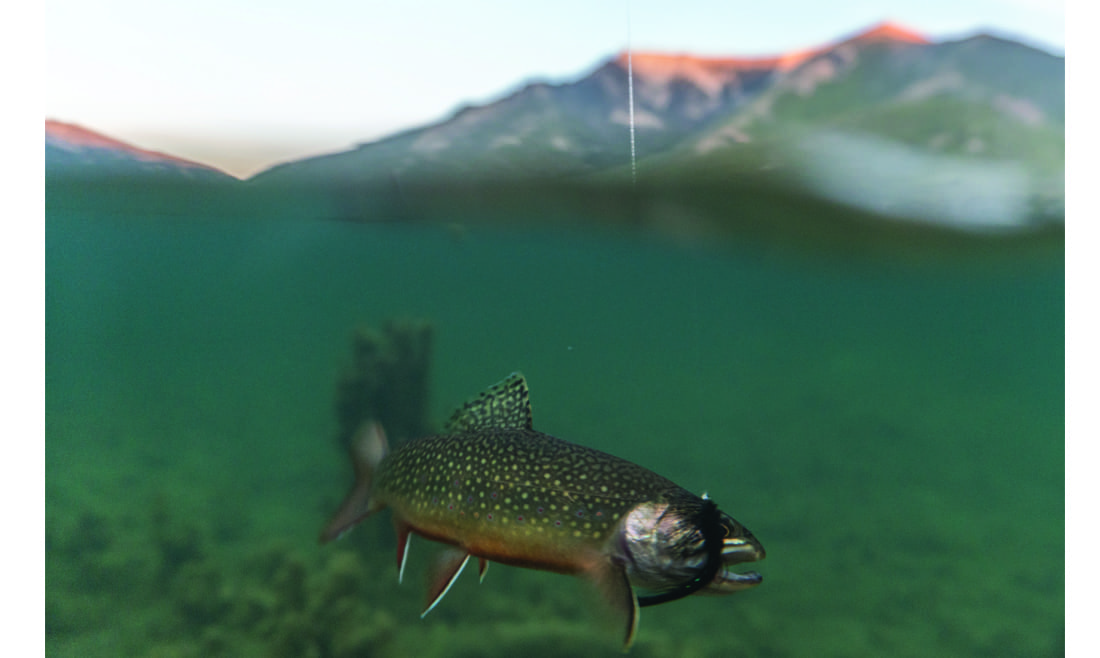
AAETAV Photographic base / Courtesy of constellations.travel, Bariloche, Argentina.
What about the planning stage of the travel?
In conclusion to my previous suggestions, the more you intend to enjoy the journey, the more it is convenient to plan it beforehand. There’s also a reality: Europeans tend to prepare and study their travels long in advance in order to get the most out of it. They set up their travel from eight to ten months ahead of time.
In contrast, Brazilians tend to do it four months before the date and Argentinians, only six weeks before. And this is a terrible mistake. For instance, this weekend is the kick-off for the winter holidays here in Bariloche and the skiing season has begun last week. And there are people really angry due to the fact that they can’t find accommodation or car rentals available nowadays. The same happens in Jujuy in February for the Carnival or in Mendoza in March for the wine harvest. Local people find that most of the booking has been made by foreigners who prepared beforehand and have been reading about it for ages.
As part of the AAETAV mission, our aim is to generate first-hand information of great quality for national, regional and long-distance tourists through two new platforms. We will include material regarding Argentina’s regions, festivities, and precise data. For instance, if you want to do bicycle touring during five days in Patagonia, the platform will inform you the options for several circuits through a search engine, and recommend the suitable period of the year to do so.
Furthermore, you must take the weather into consideration: It is complicated and dangerous to climb the Aconcagua in July, when the temperature is extremely freezing. We have been in this field for a long time and that kind of details are common for us to give a better assessment, but may amaze the outsiders. You may want to do the sighting of penguins and whales at Península Valdez during the summer, arrive and think that there was a scam: they can be seen only in winter and up to August.
What makes Argentina stand out?
The particularity in Argentina’s case is that due to its strategic geographic location, a person that travels for a short time finds everything in a single country: Puna and Patagonia; the culture from Río de la Plata and Paraná forests; drink excellent wines, eat high-quality meat, dance tango and see nature. They come to Argentina because of our logistics.
What we need to understand (I mean, Argentineans and colleagues from the bordering countries) is that nowadays a long-distance tourist, whom we aim to attract, is not competing to see whether he visits Argentina or Chile. He is sizing us up against New Zealand or South Africa, for example. He goes around the world with the combination of flights. So, we compete in a different way.
A great initiative, which was born here in the private sector and now it is expanding to the public one, is the concept of creating multi-national or region tour routes. Orientating someone who is visiting Puna: you take him to Salta or Jujuy; then cross the frontier to Chile and do sightsee in Atacama; to Bolivia and its salt mines; and come back to Argentina’s north. As a result, the tourist explored three countries within a single region.
The same can be done in Patagonia, where a tourist actually may only identify that he is in Argentina or Chile due to its passport stamp. You can start in Bariloche, cross several lakes, navigate in Nahuel Huapi Lake, continue over land and get to Puerto Varas in Chile, then fly to Paine and come back to Argentina, to El Calafate, travelling eight hours by 4x4.
These type or tours are improving over time and getting good press reviews. It is really popular in littoral region, between Misiones province, Paraguay and Brazil, to explore the Jesuit routes. These are trekking or transhumance routes. Our goal is to drive the initiative though providers and develop the local providing system to offer a quality service to a person that wants to hike, meet members of a Toba or Wichí community, talk to them, find accommodation and then move on to the next stop of the journey. This strongly gets you steeped in the local culture.
What are the key aspects to work on and improve within the sector?
We’re working on several issues at the same time. Firstly, the professional training of guides and instructors that take tourists to the activities. This means the unification and formation of criteria related to risk management and security in all territory.
Secondly, the strengthening of active tourism in each region. This has to do with the quality of the provision of service and the level of attention paid to the tourist. It is outraging if an administration manages to be at a stand of a Brazilian exhibition to attract Brazilian tourists and no one speaks Portuguese.
Finally, there is something related to macro-policies. Tourism is considered a State policy and active tourism is a core activity to develop because it is differentiating product. Not because we, the AAETAV, or the National Ministry of Tourism tell you so. The World Tourism Organisation declares that ecotourism is the tool to generate support and wealth in benefit of the regional economies. You need to believe this, approach the field and work with public and private areas in order to invest the resources you already have in the best possible way, to reach potential markets that would enhance the activity. These are the ABC's of our field.
What is Argentina’s potential to become a world leader in ecotourism?
Argentina has all the necessary ingredients to be a leader destiny within Latin American. However, we still need to convince ourselves and see that ecotourism is the product that will make the difference between massive tourism and special interests tourism.
The average tourist that consumes active tourism has an average expenditure of 400% or more than the one of a traditional tourist (without taking into account the airline tickets). A conventional tourist is guided so fast that he has only time to buy a souvenir at a shop, an imported object that is made in China. In contrast, a tourist that does active tourism meets an artisan, talks with him, understands what he’s doing, and buys real local craftsmanship. He consumes locally made products and appreciates it. During the last season, the average expenditure of tourists in craftsmanship was of 140 dollars per person.
A bond is generated with the providers and the work wheels starts spinning, which moves the local economy. At one point, you end up sitting with Rodrigo, a brew-master from Patagonia, and drink artisanal beer while he tells the story of how he prepared for two weeks what you’re consuming in that moment. It goes beyond what you had paid for the pint and you’ll enjoy it immensely. That is ecotourism and active tourism: go sightseeing, preserve the environment and consume local. To sum up, we welcome costumers and say goodbye to friends.
Tags
AAETAV / active tourism / adventure tourism / Argentina / Carlos Pelli / Conscious / ecotourism
AAETAV / active tourism / adventure tourism / Argentina / Carlos Pelli / Conscious / ecotourism

